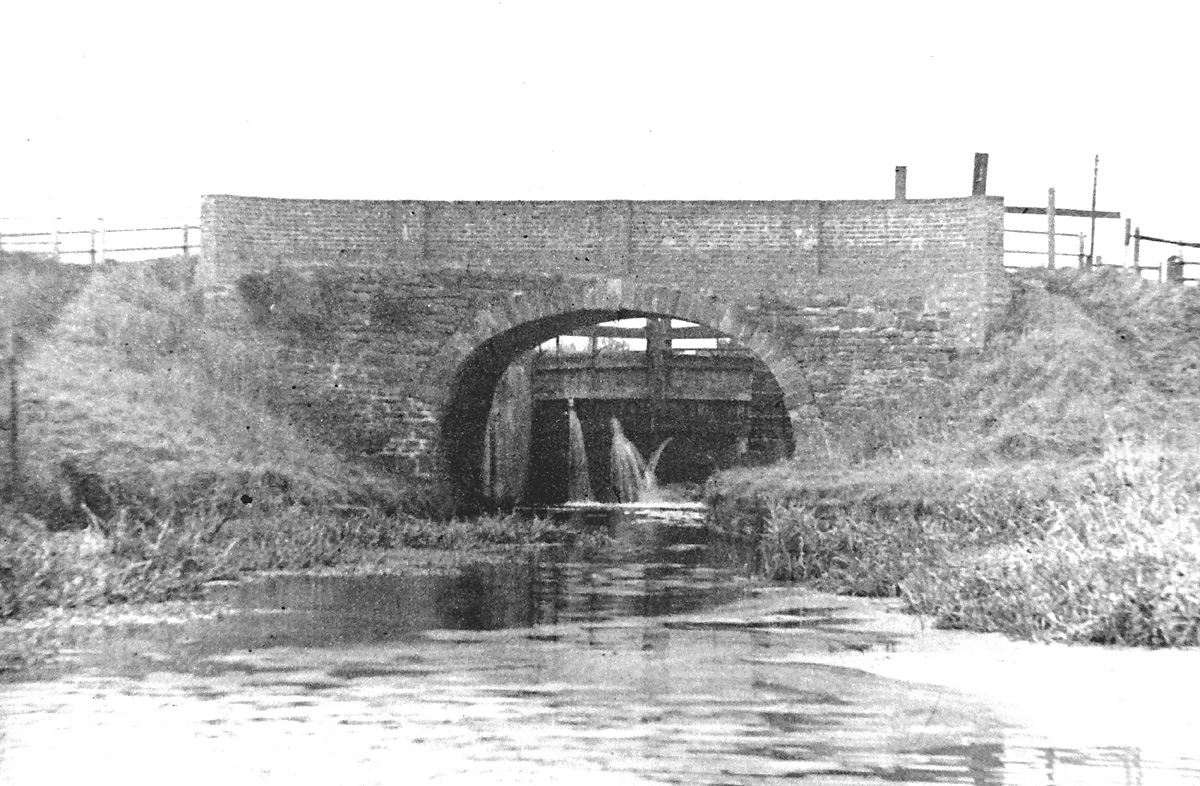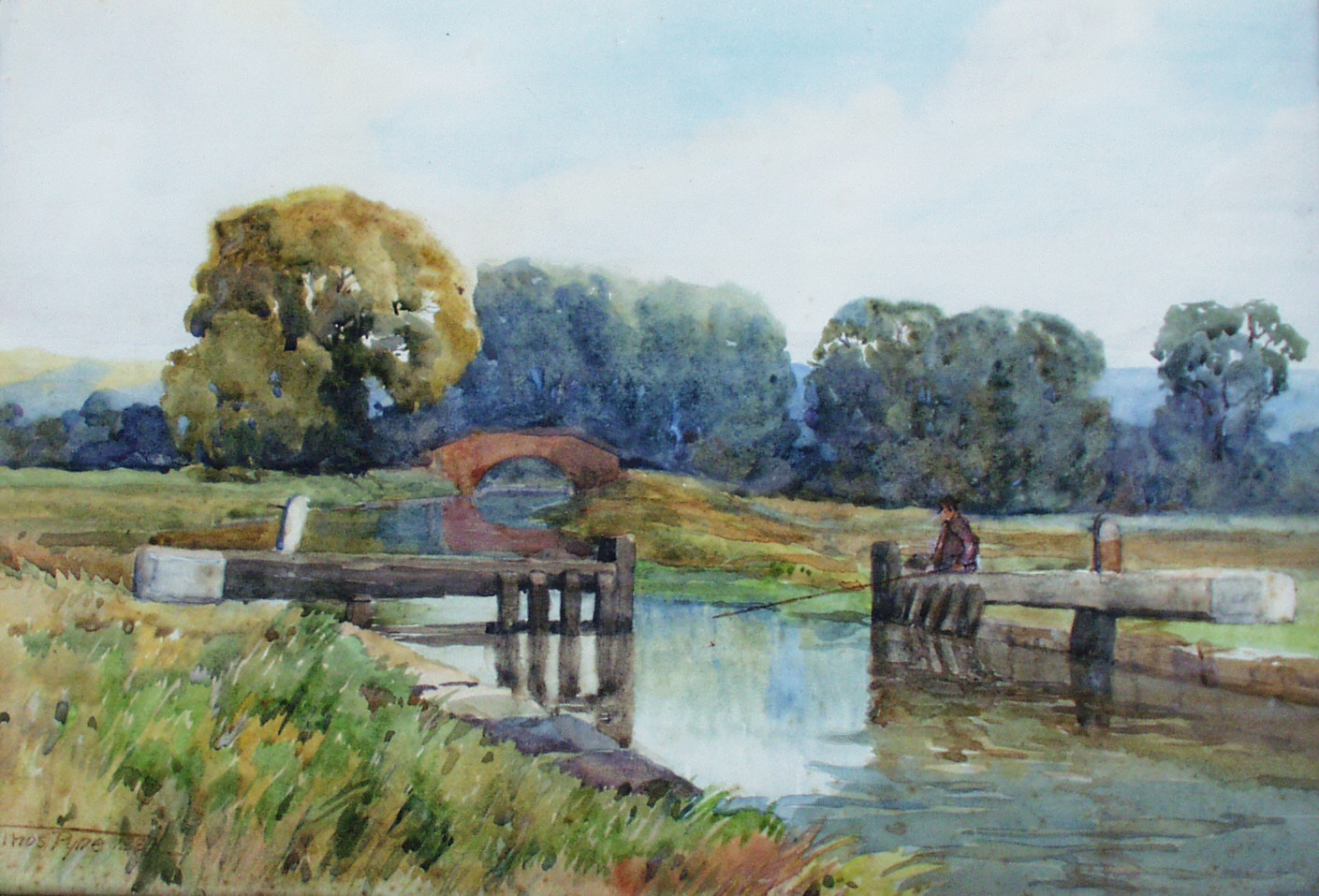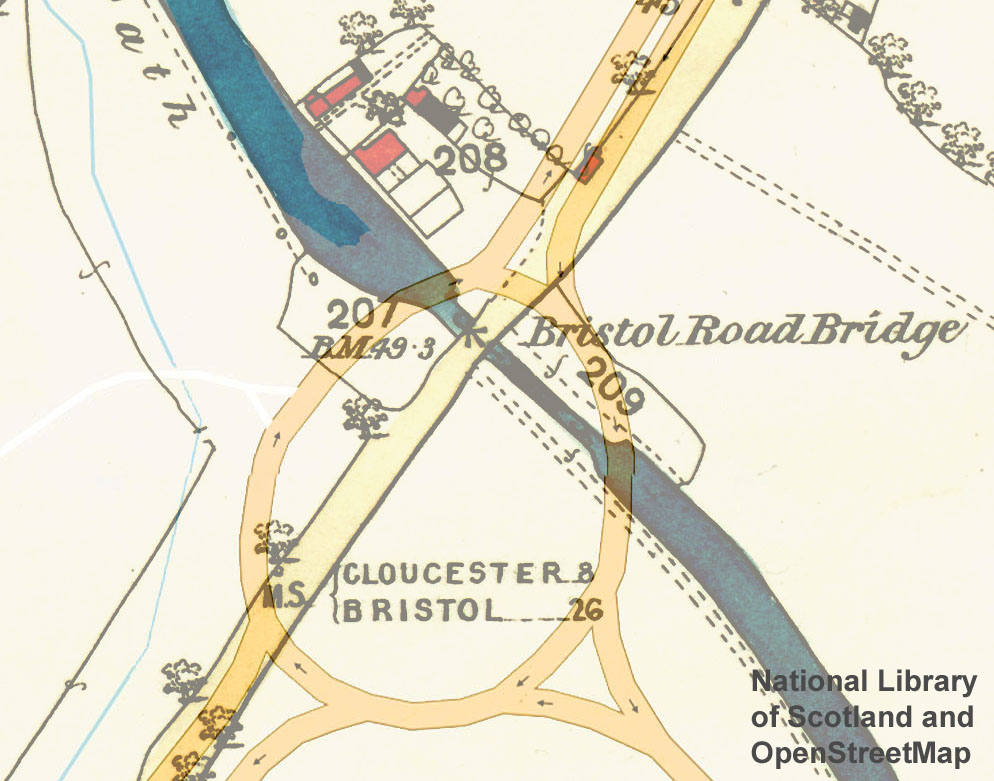Both bridge and lock were built in 1777 and were brought into use in the following year when the canal opened through to Eastington. (For sources, see end of page.)


The canal originally passed under a hump back bridge carrying the Bristol Road and through a lock on the east side of the road. As the bridge belonged to the Stroudwater Company, they had to accept responsibility for maintaining the surface of the short section of the main road immediately over the bridge until well into the twentieth century.
As large horses had difficulty passing under the bridge and climbing the steep bank up to the lock, some boatmen tried taking their horses across the main road, but this meant the horse had to jump the fence on the other side. When in 1835 this inevitably led to the fence being damaged, the farmer agreed to the Stroudwater Company installing a gate in his fence to make the road crossing easier.


In 1923, the lock was the scene of a dramatic and frightening accident when the light was fading one January evening. While one horse boat was rising in the lock, a motor boat towing a butty was approaching the lower gates and was late in trying to stop. When the bow of the motor bumped the gates, they collapsed, and all of the water in the lock and the horse boat came rushing backwards, sinking the motor. For more details, visit Gate Crasher.


After the canal closed in 1954, the wooden lock gates deteriorated and were eventually replaced by a concrete dam. Before the gates were disposed of, the Stroudwater Company allowed the iron paddle gear to be taken away in 1965 for use on the Stratford Canal that was being restored at that time.
Then in the early 1970s, the bridge and lock were cleared to make way for a roundabout connection for a link road to the nearby M5 motorway junction. To help the restoration of the canal, Highways England have recently financed the building of a channel across the roundabout, completed in 2020.
The Stroudwater Company tried to limit bathing in the canal to a few specific places under agreed conditions, but this was not easy as their men could not patrol the whole canal. During the summer of 1900, they became particularly concerned about reports of young men and boys repeatedly visiting the canal near the Bristol Road and induging in 'indecent behaviour'. So they asked the police sergeant at Whitminster to visit the scene and to explain that there was a recognised bathing place at nearby Westfield Bridge.
Responsibility for maintaining the road surface over the bridge from D1180/1/8 p38.
Helping horses to cross the main road from D1180/1/4 p99.
For re-use of paddle gear, see D1180/9/54, Letter 16 Aug 1965.
Report of indecent bathing from D1180/9/10 p443.